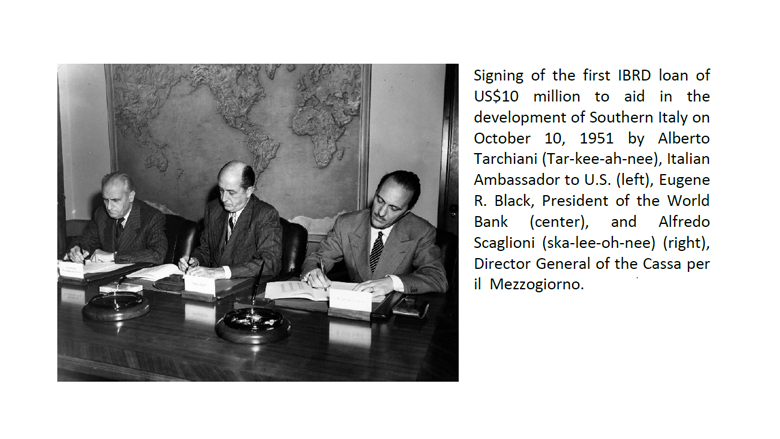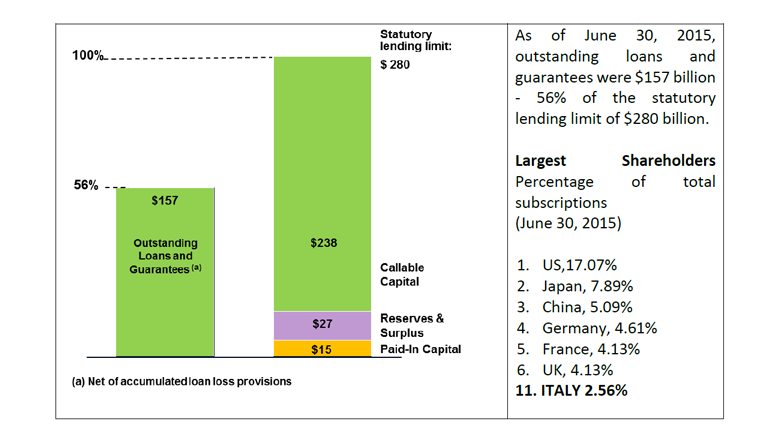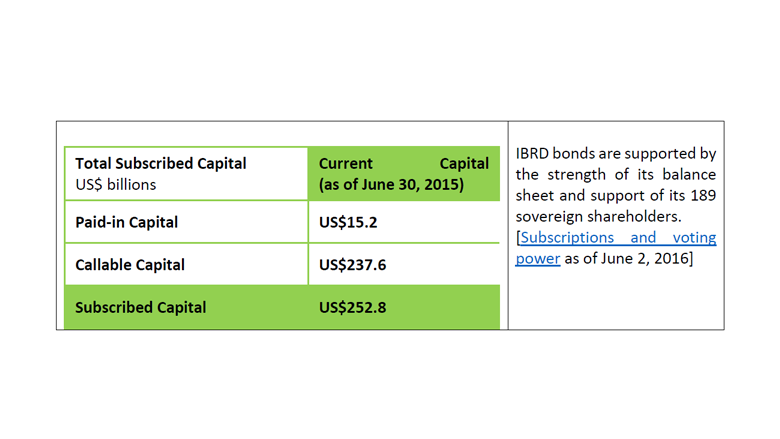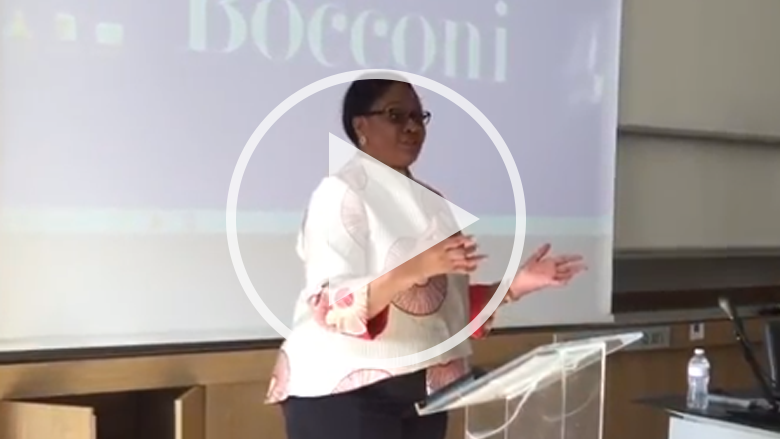Let me start by expressing my profound gratitude to Professor Francesco Perrini. I would also like to acknowledge all others who have made this event possible, notably the co-director of the master’s program, Matteo di Castelnuovo, and the internship coordinator, Josefina Ashipala.
It is an honor to speak at Italy’s most respected institution of higher learning – recognized among the most prestigious names in education around the world. The Master’s program in Green Management, Energy and Corporate Social Responsibility (CSR), is also ranked among the best, worldwide, for advanced studies in sustainable development and environmental management. [1] I was also delighted to note that Bocconi was ranked recently by QS (Quacquarelli Symonds) amongst the top five for economics degrees in Europe.
This is my first visit to Milan and my third to Italy since my first visit in 1988. In addition to being a beautiful country with great history, I could not agree more with Beppe Severgnini, Italian journalist and author who described Italy’s uniqueness as follows - “Ours is a land in constant motion, where people can think with their hands, have traded for centuries and actually invented banking.” [2]
Indeed, Italy is home to the oldest bank in continuous operation. The Banca Monte dei Paschi di Siena [3] founded in 1472, was originally formed to make loans to the poor out of charity. “Monte,” meaning “heap” or “pile,” referred to the collection of money used for charitable distribution. It is therefore appropriate that we find ourselves here in Italy, where banking for the poor has its earliest roots, and to interact with you on the World Bank’s mission of ending extreme poverty and boosting shared prosperity.
Italy has been a long-time supporter of development. In 1960, just 13 years after becoming a member of the World Bank Italy was one of the original 15 countries that established the International Development Association (IDA) [4], the World Bank’s fund for the poorest. Despite its current economic challenges, Italy has remained supportive of development, in particular in its humanitarian response to the refugee crisis.
It is a pivotal moment in Europe, for members of the European Union especially with the upcoming vote on BREXIT, where Europe is questioning the benefits of greater integration. Undeniably, regardless of these decisions, the current economic environment and the enormous global challenges we are facing only serve to remind us of our interconnectedness and the need for urgent and bold action.
I will start my remarks with a review of the global economic environment, then summarize how the World Bank can be leveraged in tackling the world’s difficult challenges and to foster sustainable development. I will conclude with a focus on some key global trends and your role in championing a better society.
As you know, since the global financial crisis peaked in 2009, the world economy has been struggling to regain momentum. Growth continues to be lackluster in advanced economies, and, while there is a considerable difference in performance across emerging market and developing economies, their overall growth remains below potential. According to one of the World Bank’s flagship publications, the June Global Economic Prospects, that we published last week, 2016 growth prospects have weakened throughout the world.
The Bank projects global growth for this year at 2.4 percent, unchanged from the disappointing pace of 2015, and 0.5 percentage point below the January 2016 forecast. Emerging market and developing economies (EMDEs) are facing stronger headwinds. This is particularly so for China which had been the anchor of global growth in the recent past. Reasons include persistently low commodity prices, notably oil prices which declined from US$100.00 in mid-2014 to just below USD30.00 earlier in the year. Global trade and capital flows have also faltered.
Monetary policies in advanced economies have remained very accommodative. As you know the European Central Bank (ECB) announced a package of further easing measures in March, including an expansion of its asset purchase program to incorporate purchases of corporate bonds in addition to further reduction in all policy rates. In late January, the Bank of Japan introduced a negative interest rate on marginal excess reserves. Even the U.S. Federal Reserve that, in December 2015, raised policy rates above the zero lower bound for the first time since 2009, appears to have slowed down the pace of rate tightening. Large emerging market countries such as China and India have also eased policy rates or cut reserve requirements.
Despite the efforts being made, the world remains very fragile.
Almost 800 million people have no clean water.
1 billion people live more than two kilometers away from an all-weather road.
1.3 billion people have no access to electricity.
2.5 billion people lack adequate sanitation and
2.8 billion people cook food with dangerous fuels
Some may feel that they can still ‘ensconce themselves in the “rich world” under the illusion that the tornado “in the poor world” will not damage their homes’. We know this is no longer the case in the world of today because of the interconnectedness of the world which is fueling economic weaknesses across the world which in turn is fueling a migration crisis and security challenges.
Perhaps the best illustration of the interconnectedness of today’s world is how forced displacement of people in one country can directly affect both neighboring as well as countries that are farther away.
According to a recent UN report, the number of people, almost 60 million, uprooted from their homes by war and persecution is currently larger than in any year since such record-keeping began. This issue is of course painfully familiar to the European Union(EU), and in particular to Italy which is often the first host at the EU’s gates. I am told that more than 15 million people displaced, as refugees and internally-displaced persons, by conflicts such as Syria’s, have come to represent the highest figure for forced displacement since World War II in the Middle East and Europe. as the World Bank President Kim said recently, “if fragile states still have 47 percent of their people living on less than 2 euros a day by 2030, as projected by the Bank, while the developed world prospers, the flow of migrants and refugees will not stop”.
Issues such as terrorism, refugees, pandemics, climate change and economic hardship no longer stop at borders. They show very clearly how globally connected we all are.
I do however believe that the decisions and commitments made by global leaders in 2015 on tackling development challenges on several fronts are key to addressing global fragility. As you know, in July last year, global leaders committed to scale up financing for development from billions to trillions including supporting developing countries with domestic resource mobilization and leveraging the private sector. In September 2015, they agreed on 17 sustainable development goals or global goals to replace the millennium development goals– ranging from no poverty, no hunger, good health, quality education, gender equality, clean water and sanitation, renewable energy, good jobs and economic growth, innovation and infrastructure, reduced inequalities, sustainable cities and communities, responsible consumption, climate action, life below water, life on land, peace and justice, to partnership for the goals. They established 169 specific targets to ensure that these goals are achieved by 2030. In December 2015, 195 global leaders committed to ensuring that global warming does not exceed two degrees by 2100 and to working hard towards global warming not exceeding 1.5 degrees. Furthermore, heads of governments met in New York in April this year to commit to their countries’ Nationally Determined Contributions (NDCs), in this respect.
The complexity of the world’s challenges makes collective action a necessity. I believe that with the support of its member countries, notably Italy, the World Bank is well positioned to develop innovative solutions to tackle these global challenges. This is because of the support it enjoys from its 189 member countries, 79 of whom are its clients. It is also because of its global reach and convening power. It is because it is a trusted partner and honest broker. It is a triple ‘A’ rated institution, in other words, one of the most highly rated institutions in the world. It uses innovative strategies to raise funds competitively from the international capital markets for its support to its clients.
As you know, the World Bank (or the International Bank for Reconstruction and Development (IBRD)) was established at the Bretton Woods conference in 1944 by delegates of the Allied countries [5] to speed up reconstruction of war-torn European countries in the aftermath of World War II.
This was also a seminal moment for these delegates concerned about the impact of global interconnectedness as they came together to establish the World Bank and the International Monetary Fund in an effort to bring order and coordination around global economic activity.
Shortly thereafter in 1947 Italy became a member of the World Bank, which played a critical and pivotal role in assisting the Italian government during the difficult years following the World War II.
The first loan to Italy was signed in October 1951 to finance the reconstruction of industrial, energy and agricultural infrastructure in southern Italy, Sicily, Sardinia and Elba. [6] This $10 million loan was extended to the newly established Cassa per il Mezzogiorno or Fund for the South.

Today, the World Bank is the world’s largest source of development finance and expertise with over 70 years under its belt financing development projects around the world. As of 30th June 2015, the Bank had US$ 157 billion loans and guarantees outstanding.
When the World Bank became operational in the 1940s, it did so with a very small amount of paid-in capital. This seed money has over time grown to what it is today – paid-in capital of $15 billion and has been the basis for about $625 billion in cumulative lending since 1947 [8]. It is complemented by US$ 27 billion of accumulated reserves and US$ 238 billion of callable capital to be made available by member countries in the unlikely event of a call on capital for the payment of debt holders. Indeed, no call on capital has ever been made. This ability to leverage comes from the Bank’s solid financial structure, conservative financial policies and consistent performance, as well as the support and capital backing from its shareholders.


With the support of member countries like Italy and its citizens the Bank raises the bulk of the money it invests for development projects from the international capital markets. With a little over US$ 400 million in paid-in capital and 2.6% in total subscriptions, Italy is the 11th largest shareholder of the World Bank
In addition, the World Bank continues to leverage its capital and now raises about US$60 billion in the capital markets annually. As a triple-A rated borrower the World Bank raises money through bond issues on the international capital markets at extremely competitive rates which the Bank passes on to its borrowers through low cost credits.
In addition to the world’s largest institutional investors, retail investors also play an important role in financing development through the purchase of World Bank bonds.
In May, Italian retail investors invested about $670 million in World Bank bonds.
Similarly, in March, Italian investors seeking high quality investments with a sustainable purpose invested close to $200 million in a World Bank Sustainable Development Bond.
These followed the World Bank’s first Green Growth Bond for retail investors in Italy in 2015. The Green Growth program was launched in partnership with BNP Paribas to offer investors long-term performance with an opportunity to support environmental, social and governance (ESG) investment considerations.
Increasingly investors like these are seeking investment opportunities that meet their desire to invest in line with SRI principles. We are seeing a growing cadre of investors interested not just in doing well (financially), but also in doing “good”. As a consequence, we have done over 100 Green bond transactions and raised about US$ 9 billion. We also continue to see great interest by all investors, institutional and retail alike, in World Bank bond transactions.
Let me give you a few concrete examples of the type of World Bank projects that these investor dollars and euros support
The Bank is partnering with Ecuador on a transport project to improve its metro system: Quito, Ecuador’s capital, is located in a valley surrounded by volcanoes which limits construction of modern wide roads. Limited infrastructure has meant traffic jams and increased greenhouse gas emissions. The project will improve urban mobility to reduce travel time, decrease operational costs of the transport service, improve connectivity, security, and comfort of the current system and reduce emissions from pollutants and greenhouse gases. In numbers, this would mean an additional 23 kilometers of metro rail and 15 stations with six of them integrated with the Metrobus-Q to transport 360,000 passengers daily. The project aims to save $14 million in fuel annually; generate 1,800 jobs; alleviate traffic congestion and improve access of the 760,000 people who work near the metro line.
In the area of energy efficiency, we are working with Mexico where about 80% of its energy comes from fossil fuels (including imported gas). Residential electricity use is growing faster than Mexico’s GDP, or at about 3.7 percent/year, and accounts for about a ¼ of all electricity use. Air conditioning, home appliances, and electronics are expected to be the main growth areas. In response, the government initiated energy efficiency programs for the residential sector. A World Bank project is financing an appliance exchange program which supports the free exchange of efficient light bulbs and a loan/subsidy program for efficient appliances targeting lower income households. This project is expected to replace 45.8 million inefficient light bulbs and 1.9 million old and inefficient refrigerators and air conditioners; reduce 3.32 million tons of CO2equivalent emissions cumulatively; and produce electricity savings of 50-60% in residential households and 10,000 GWh of cumulative energy savings.
We are also working with countries on renewable energy projects. For example, in China, millions of households rely on the agriculture sector for their livelihood. The agricultural sector, however, has had widespread negative impacts on the environment because of inadequate farming techniques involving misuse of land leading to desertification, over-use of synthetic pesticides and fertilizers without adequate environmental controls. In addition, agriculture is responsible for 50% of China’s methane emissions (a potent greenhouse gas). A World Bank project is supporting cleaner, healthier farmyard environments, along with the reduction of greenhouse gas emissions through methane capture and combustion to generate energy, and the reduction of burning of coal and firewood. The project expects to reduce related CO2 equivalent emissions by 800,000 - 1,000,000 tons per year. 400,000 to 500,000 rural households also stand to benefit from cleaner biogas-based cooking and heating systems.
In Morocco, strong economic growth and stability over the past decade has resulted in a substantial expansion in energy demand which has been met by importing oil at an annual cost of US$80 billion with consequent emissions of greenhouse gases. The World Bank, other development banks, and bilateral agencies are supporting three phases of the Noor-Ouarzazate (war-zah-zaht) Complex which uses state-of-the-art concentrated solar power technology. A $400 million IBRD loan is financing part of the construction costs and the government’s utility power purchases. The overall project is expected to install 410 MW in new renewable capacity, representing 21% of Morocco’s solar development commitment by 2020. It also aims to produce 1,638 GWh (gigawatt hours) of solar power annually, and avoid 522,000 metric tons of CO2equivalent emissions annually. The latter is the equivalent of taking over 110, 000 passenger vehicles off the road each year.
Overall, the World Bank Group intends to invest and mobilize US$ 29 billion annually by 2020, to support climate change as we believe we need bold action given the threats to the world including unwinding development gains and placing an additional 100 million people into poverty. We expect our Climate Action portfolio to grow from 21% to 28% of our support to our clients. We expect even more to be done when we include the mobilization efforts of our private sector arm, the International Finance Corporation (IFC) and our guarantee arm, the Multilateral Investment Guarantee Agency (MIGA).
As someone associated with the Masters in Green Management, Energy and Corporate Social Responsibility (CSR) program, you are indeed what the world needs. While I could not bet on where the world will be 26 years ago when I had just completed my Masters in Business Administration Program at Harvard Business School, I feel more certain that I can bet on the fact that green management, energy and CSR will be important areas, today, tomorrow and in 26 years’ time. A few highlights that make me ready to bet are
Renewable energy is the world’s fastest-growing energy source: the price of photovoltaic solar panels has declined 99% over the last four decades, from $74 a watt in 1972 to less than 70 cents a watt in 2014.
Between 2009 and 2014, solar panel prices dropped by three-fourths, helping global PV installations grow 50 percent per year.
According to Deutsche Bank as of early 2014, solar PV was already competitive with average residential, commercial or industrial electricity rates in 14 countries, and in California.
Saudi Arabia has 41,000 megawatts of solar PV operating, under construction and planned – enough to generate up to two-thirds of the country’s electricity.
Over the past decade, world wind power capacity grew more than 20 percent a year, in part due to public policies supporting its expansion, and the falling costs.
China is now generating more electricity from wind farms than from nuclear plants, and is expected to meet its official 2020 wind power goal of 200,000 megawatts.
By comparison, that would be enough to satisfy the annual electricity needs of Brazil.
By the start of last year, some 70 countries, including many in Europe, encourage investments in renewable by using the so called ‘feed-in tariffs’ that pays people who generate green energy and supply it to the grid.
Some 40 countries have either implemented or are planning national carbon pricing mechanisms. Seven regional cap-and-trade pilot programs are already under way in China, for example. When China rolls out its planned national cap-and-trade program in 2017, roughly a quarter of global carbon emissions will then be priced.
As you consider how you can leverage these and other global transformative trends to contribute to improving society, let me offer one final consideration.
I believe that to whom much is given, much is expected. And each of you, by just being students at this world-class university in this lovely city in a peaceful country ‘has indeed been given much’. And there is much to be done, ‘so the world expects much of you’.
As the world becomes increasingly interconnected, I urge you to think how as future policy makers, researchers, entrepreneurs, CEOs, professors, and global citizens, you can contribute to achieving the Sustainable Development Goals, ending extreme poverty and boosting shared prosperity.
“The great aim of education is not knowledge but action.” --Herbert Spencer, English philosopher, biologist, anthropologist, sociologist, and prominent classical liberal political theorist of the Victorian era
Thank you.
[1] Source: http://www.best-masters.com/ranking-master-sustainable-development-and-environmental-management.html.
[2] NY Times, Aug. 12, 2014: http://www.nytimes.com/2014/08/13/opinion/beppe-severgnini-matteo-renzis-red-tape-problem.html
[3] Monte dei Paschi di Siena is one of the main banks in Italy. It is the flagship of the MPS Group, which is a leader on the domestic market in terms of market share. Monte dei Paschi, familiarly called "il Monte," was founded in 1472 under the auspices of the Republic of Siena. It became the ideal heir of Siena's prestigious medieval mercantile and banking traditions, developing an efficacious system of credit to the advantage of the local economy. One interesting historical note is that the citizens of Siena put up income from the land as guarantees against loans for farming and city infrastructure, which led to it being referred to as Monte dei Paschi in reference to the land.
The public character of the Monte was confirmed with the reform of 1624, which equipped the bank with progressive banking structures. On this occasion, the Medici Grand Duke granted depositors state guarantees on their money by entailing the income from the state-held pasture lands in the Maremma (the "Paschi" which gave the bank its name). It is especially meaningful that the Grand Duke asked in return to be indemnified by the entire citizenry of Siena for any losses he might incur. On this foundation, Monte dei Paschi was able to consolidate and increase its banking activity in the seventeenth and eighteenth centuries. Thus the bases were created for its considerable expansion right after national unification, and even more significantly in the twentieth century.
In 1995, by decree of the Minister of the Treasury, the banking firm was transformed into a corporation called Banca Monte dei Paschi di Siena. The Bank operates, also through its subsidiaries, in the various sectors of banking and finance, from traditional banking to special credit to asset management, insurance, and investment banking, with more than 1,900 branches all over Italy and a presence in the world's major economic and financial centers.
The Monte has a strong retail vocation (families and small and medium businesses) that helps to make it the "bank of reference" in all the areas in which it is active. Since June 1999, Banca Monte dei Paschi di Siena shares are traded on the Mercato Telematico Azionario (screen-based trading market) of the Italian Stock Exchange, and since September 1999 it is listed on the market's most representative index, FTSE MIB.
[4] The International Development Association (IDA) came into being in 1960 with an initial subscription of $912.7 million. The original fifteen signatories include: Pakistan, Sweden, Australia, Vietnam, Norway, China, United States, Canada, Sudan, Malaysia, United Kingdom, Italy, India, Germany, and Thailand.
[5] The Articles of Agreement of the International Bank for Reconstruction and Development and the International Monetary Fund were drawn up and adopted at Bretton Woods, New Hampshire, in a conference of 44 governments: Australia, Belgium, Bolivia, Brazil, Canada, Chile, China, Colombia, Costa Rica, Cuba, Czechoslovakia, Dominican Republic, Ecuador, Egypt, El Salvador, Ethiopia, France, Greece, Guatemala, Haiti, Honduras, Iceland, India, Iran, Iraq, Liberia, Luxembourg, Mexico, The Netherlands, New Zealand, Nicaragua, Norway, Panama, Paraguay, Peru, Philippines, Poland, South Africa, USSR, United Kingdom, United States, Uruguay, Venezuela, and Yugoslavia.
[6] The purpose of the loan was to develop the land of southern Italy, Sicily, Sardinia and Elba, to employ unused manpower, and to create a sound basis for industrialization. About one-half of the project funds were for reclamation and irrigation of land along the coast and in the river valleys, for reforestation of mountain areas, and for farm improvements. One-quarter of the project expense was to finance the settlement of land distributed under Italy’s land reform program, while the rest of the funds were used for the construction of aqueducts, the construction and rehabilitation of provincial roads, and to develop tourist facilities.
[7] The Cassa del Mezzogiorno (Fund for the South) was a public effort by the Italian government to stimulate economic growth and development in the less developed Southern Italy (also called "Mezzogiorno"). It was established in 1950 primarily to construct public works and infrastructure (roads, bridges, hydroelectric and irrigation) projects, and to provide credit subsidies and tax advantages to promote investments.
[8] Approx. $525 billion cumulative lending according to FY2010 Annual Report; plus almost USD 100 billion since then.

